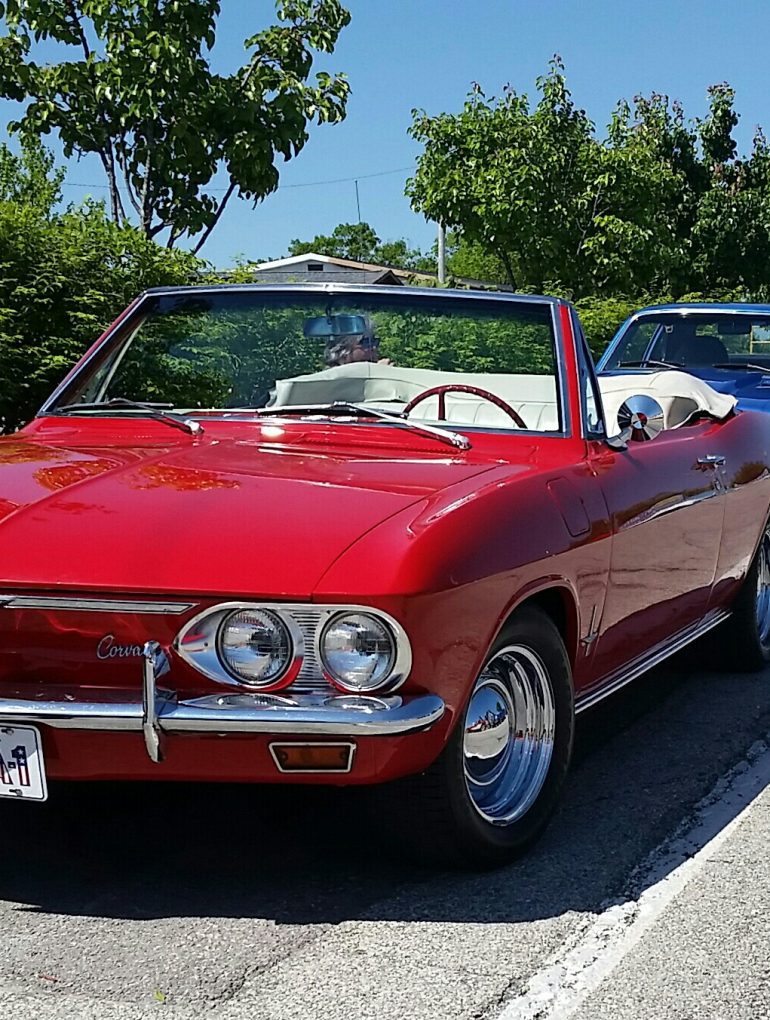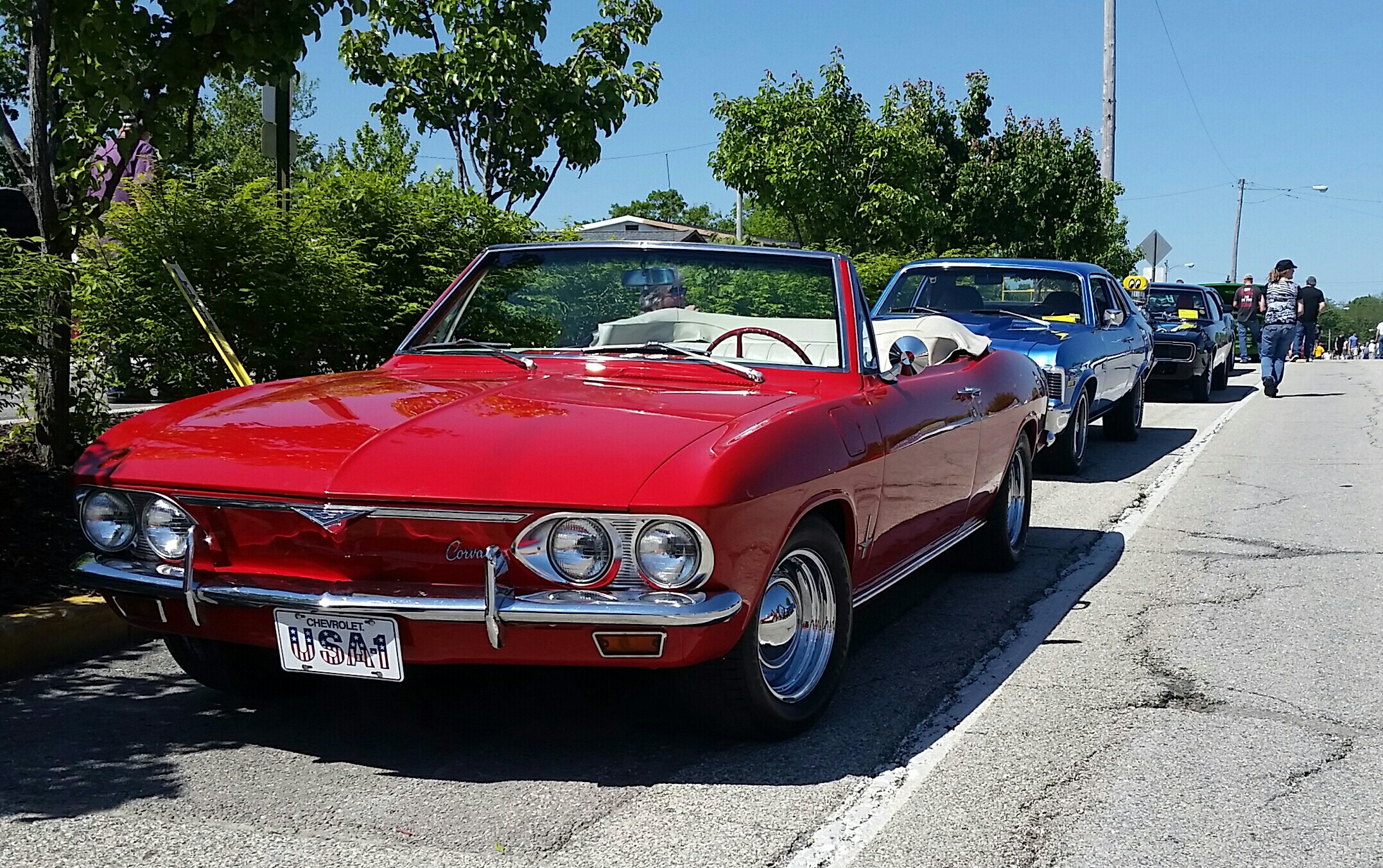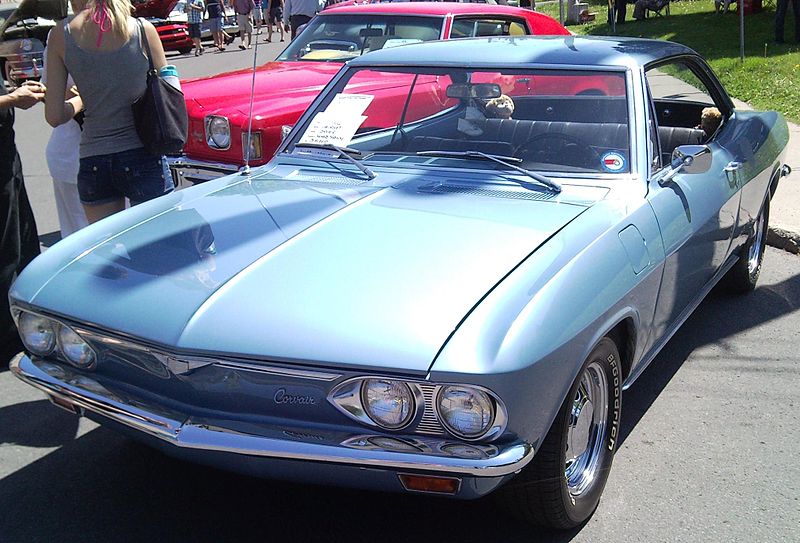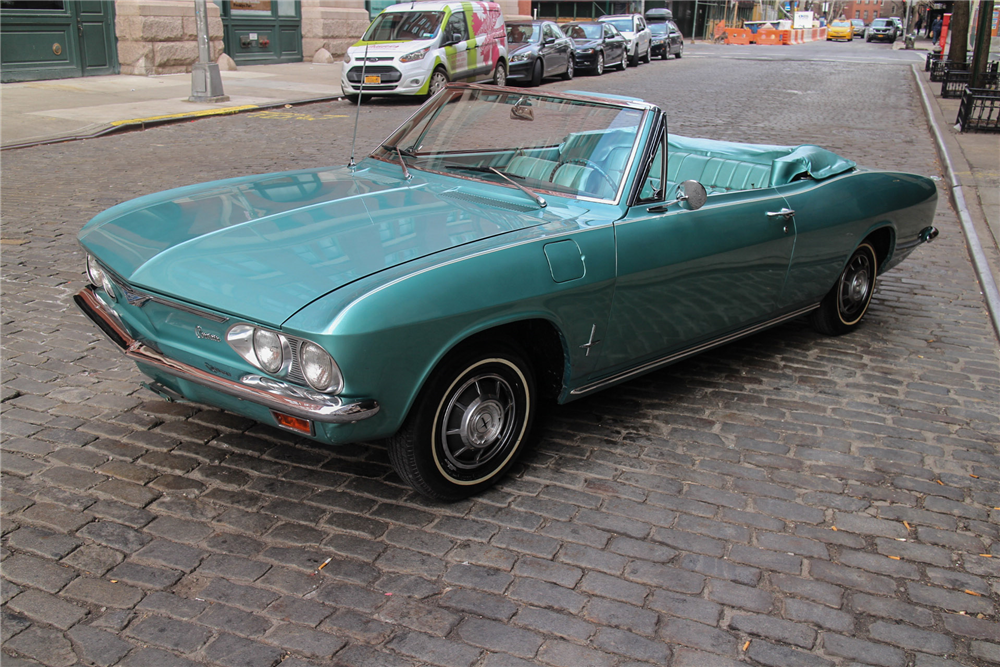1966 Corvair Monza
Chevrolet’s answer to the Volkswagen Beetle was the pretty Corvair whose engine was rear-mounted and air-cooled – the first such mass-produced car with those features. Selling for half the price of a Ford Thunderbird, it was one of Detroit’s answer to the clamor for economy compacts. The other cars to follow suit to the changing times were the Ford Falcon and Plymouth Valiant.
More than half of all Corvairs had automatic transmission, ironic despite the fact that manual transmission saves on gas. Features such as shatter-resistant side mirror, massive storage space under the hood, were standard. Options included wire wheel covers, whitewalls, hand-rubbed walnut steering wheel and windshield-mounted automatic compass.
The European-style vinyl interior came with bucket seats and telescopic steering column. For the exterior color, there were 15 to choose from. The engine comes with alloy, air-cooled horizontal sixes.
But the days of the Corvair was numbered. On top of competition from the new Ford Mustang, Ralph Nader’s book Unsafe at Any Speed, claimed that crashes related to uninstalling a crucial $15 suspension stabilizing bar to earlier Corvairs was done by Chevrolet in order to cut costs. Chevrolet’s decision to redesign the suspension in 1965 models was too late to stem the bad publicity and decreased sales. Sales fell from 220,000 in 1965 to half that in 1966.
A 1972 safety commission report conducted by Texas A&M University contradicted Nader’s claim and concluded on its 143-page report that “the 1960–1963 Corvair possessed no greater potential for loss of control than its contemporary competitors in extreme situations.” Nader’s claim was without merit and four contemporary cars—a Ford Falcon, Plymouth Valiant, Volkswagen Beetle, and Renault Dauphine—along with a second-generation Corvair (with its completely redesigned, independent rear suspension) have comparable results when tested on handling and stability in extreme situations.
But also faced with competition from the Ford Mustang, Chevy’s own Camaro, and other pony cars, GM’s management had lost interest in continuing production of the Corvair which had been costly to produce but was not offered at a premium price.
Chevy Corvair had sold 367,000 in 1961. In 1969, only 6,000 Corvairs were built, a car which only 9 years before was named Motor Trend’s “Car of the Year”.
The 1966 Monzas remained essentially unchanged from 1965. One notable change was a new four-speed synchromesh transmission using the standard Saginaw gear set with 3.11:1 first gear ratio used by other GM 6-cylinder vehicles. The steering column was changed to a two-piece design with universal joint, lessening the danger of intrusion during a front end collision (actually a mid-1965 running change). A plastic air dam was installed below the front valence panel to conceal the front suspension and underbody, and lessen crosswind sensitivity. In front, The “lock door” emblem was changed from red to blue and featured a shorter bar. Air conditioned cars received a new condenser that was mounted in front of the engine. The Corvair script nameplate was moved from atop the trunk lid to a position next to the driver’s side headlight bezel. But still, sales began a decline as a result of Nader’s book. A decision was made to discontinue production of the car.
1966 Corvair Monza Specs
- Production 60,447
- Body Styles Two- and four-door, four-seater coupe and convertible.
- Construction Steel unitary body.
- Engines 164cid flat sixes.
- Power Output 95-140 bhp.
- Transmission Three-speed manual, optional four-speed manual, or two-speed Powerglide automatic.
- Suspension Front and rear coil-springs.
- Brakes Front and rear drums.
- Maximum Speed 105-120 mph
- 0-60 mph 11-15 sec







